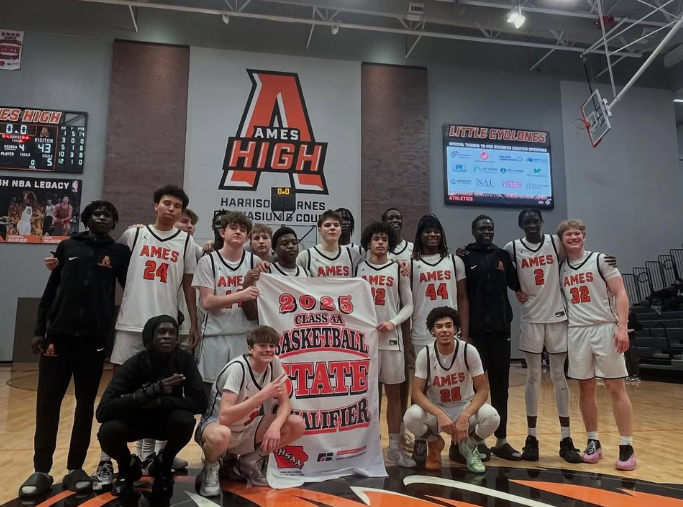Dave Nunn isnât staying at the Emergency Residence Projectâs shelter anymore. After staying there for about five weeks, he moved out last weekend. Most people are only allowed to stay two weeks, but Nunn was given an extension because of the progress he had made in finding a job. Nunn, like many other citizens of Ames, has experienced homelessness. âI lost my job about a year ago during some layoffs,â he said. âI looked for another job in the area and applied to a lot of places, but I was only called in for an interview at one place. There were ten people applying for six open slots, so I didnât get that.â Nunn lost his home, and couldnât stay in his hometown of Boone because all of the shelters were full. Fortunately, things are looking up for him. âI just got a job working 12 hour days, and once I save up a couple paychecks, Iâll be able to make it on my own,â Nunn said. However, not all people are as lucky as Nunn in being able to get back on their feet. One man staying at the shelter, who wished to remain anonymous, has been homeless and living on the streets for about three years. âIâm gonna try and find some work, but itâs hard,â the man said. âSometimes you have to lie to employers. If they find out youâre homeless or in a shelter, they wonât hire you.â The man lost his home when he lost his job. âI hurt my back moving furniture, and then I couldnât work, so I couldnât pay my rent,â he said. âI was being paid cash under the table as a mover, so I didnât have any workerâs compensation.â After staying with some friends for a while, the man started living outdoors. âI started running with some other guys who were living outside, and they sort of showed me the ropes of surviving on the streets,â he said. âUsually I stay in a camp or sleep under a bridge to keep from getting wet when it rains. On a night like last night, itâs no problem, I can just sleep on the dry ground.â The man began staying at the shelter recently to try to find a job. âOnce youâre down and out on the streets, itâs really hard to get back up,â he said. âWhen you donât have an address or a phone or a car, people donât want to hire you. You have to really get lucky to get a job.â Such is the vicious cycle of homelessness. Vic Moss, the director of the Emergency Residence Project, has been working against homelessness for about 20 years. Last year, the shelter housed approximately 560 people. The ERP also works to prevent people from having to come to the shelter. âWe help about 1,500 people a year avoid coming to the shelter, which is usually done by making a payment to help prevent an eviction or the loss of utilities,â Moss said. âItâs best if we can just prevent people from coming here, because they canât stay here for long before having to move out again.â The shelter has time limits on short term housing because of the hundreds of people who come looking for help. The capacity is only about 16 people in the short-term housing. âWeâre not meeting the need for short-term housing though, because our longer-term housing is full just about every night of the year,â Moss said. âWe donât have room for most of the families that need help. Weâre doing a little bit, but thereâs still a lot bigger demand than we can handle here.â Those who the ERP is able to assist appreciate the help. âThis shelter does a lot of good,â Nunn said. âAs long as you donât take advantage of them, theyâll treat you right.â Homelessness is a growing problem, though. According to Moss, the problem has grown faster than the solution, and the ERP is actually less relevant to the overall issue of homelessness than it was when he began working there. âWe used to be able to house only about seven people a night 20 years ago,â he said. âNow we can house a lot more people, but the problem has grown much faster than that, so weâre less likely to have room for a family now than we were back then.â Moss sees the need for the shelter as a symptom of a problem, rather than a solution. âPeople should understand that, ideally, the shelter wouldnât be a necessity. It means that a family has lost their home and theyâre going to be in another place thatâs probably pretty crowded and they have to move out pretty quickly,â he said. âI wish we could go out of business because of a lack of customers.â Another symptom of the problem is the percentage of income that people pay for housing. Many banks and other institutions figure that about 30 percent of a familyâs income should go to housing, and the rest to things like food, utilities, transportation expenses, and insurance. âWhen you have a community in which there are a lot of people paying much more than the 30 percent of their income for housing, you know that thereâs going to be a problem,â Moss said. âMaybe thereâs a family thatâs just making it every month and then something happens. Maybe a muffler falls off the car, and if itâs the whole exhaust system, it can cost more than $400 to replace. That might be the money that they needed for rent that month. And so they have to make a choice; if you donât have a job then you canât pay for anything, and you canât get to your job if you donât have a car, so they decide to fix the car and then they canât pay their rent.â Understanding the statistics about how much families spend on housing compared to how much they should be spending on housing is something that Moss thinks would help to alleviate the stigma that the homeless face. âThereâs a lot of prejudice against the homeless. Many years ago I saw a column in which a guy said that [the homeless] were either mentally ill or addicted to drugs,â Moss said. âAlthough most papers wouldnât state something like that, there are a lot of people that believe this, even though they wonât come out and say it. âWhat they donât do is look at the wage structure in the community, and when you do that, you can see where the problem really lies. You donât have to be a social scientist to understand that you canât pay more than half of your income for housing.â
Categories:
Homelessness affects residents of Ames
Spencer Arritt
•
April 30, 2007
Story continues below advertisement
0
Donate to The WEB
$200
$450
Contributed
Our Goal
Your donation will support the student journalists of Ames High School, and Iowa needs student journalists. Your contribution will allow us to cover our annual website hosting costs.
More to Discover
About the Contributor

























